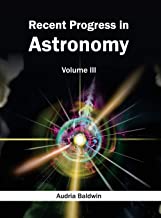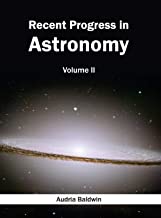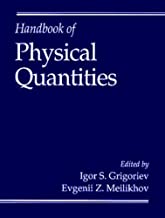Crystal Optics: Properties and Applications
Original price was: ₹20,844.00.₹16,675.20Current price is: ₹16,675.20.
ISBN: 9783527413850
Author/Editor: Ashim Kumar Bain
Publisher: John Wiley
Year: 2019
1 in stock (can be backordered)
Description
Reviews the properties and applications of photo-elastic, acousto-optic, magneto-optic, electro-optic, and photorefractive materials
This book deals with the basic physical properties and applications of photo-elastic, acousto-optic, magneto-optic, electro-optic, and photorefractive materials. It also provides up-to-date information on the design and applications of various optoelectronic devices based on these materials.
The first chapter of Crystal Optics: Properties and Applications covers the basic concepts of crystal optics, such as index ellipsoid or optical indicatrix, crystal symmetry, wave surface, birefringence, and the polarization of light. Chapter 2 reviews the physical phenomena of crystal optics in isotropic and crystalline materials. It describes in detail research information on modern photoelastic materials and reviews the up-to-date photoelastic device applications. Chapter 3 develops the underlying theory of acousto-optics from first principles, formulating results suitable for subsequent calculations and design. The fourth chapter describes the basic principles of magneto-optic effects and mode of interaction with magnetic materials. The fifth chapter provides an understanding of the physical phenomenon of the linear and quadratic electro-optic effects in isotropic and crystalline materials. The last chapter collects many of the most important recent developments in photorefractive effects and materials, and pays special attention to recent scientific findings and advances on photorefractive materials and devices.
-Features up to date information on the design and applications of various optoelectronic devices
-Looks at the basic concepts of crystal optics, including the polarization of light, effects of reflection and transmission of polarization and light polarizing devices, and more
-Pays special attention to design procedures for the entire range of acousto-optic devices and various applications of these devices
-Provides research information on modern magneto-optic materials and reviews the up-to-date magneto-optic device applications?up to terahertz (THz) regime
Crystal Optics: Properties and Applications is an excellent book for the scientific community working in the field, including researchers, lecturers, and advanced students.
Additional information
| Weight | 1.068 kg |
|---|
Product Properties
| Year of Publication | 2019 |
|---|---|
| Table of Contents | Preface xi Overview xiii 1 Crystal Optics 1 1.1 Introduction 1 1.2 Index Ellipsoid or Optical Indicatrix 1 1.3 Effect of Crystal Symmetry 3 1.4 Wave Surface 4 1.4.1 Uniaxial Crystal 4 1.4.2 Biaxial Crystal 5 1.5 Birefringence 6 1.6 Polarization of Light 8 1.6.1 Linear Polarization - Equal Amplitudes 10 1.6.2 Linear Polarization - Unequal Amplitudes 10 1.6.3 Circular Polarization 11 1.6.4 Elliptical Polarization 12 1.7 Changing the Polarization of Light 13 1.7.1 Polarizer and Polarizing Beam Splitters 13 1.7.2 Birefringent Wave Plate 14 1.8 Effects of Reflection and Transmission on Polarization 16 1.8.1 Interface Between Two Media 16 1.8.2 Multilayer Thin-Film Filters 17 1.9 Light Polarizing Devices 20 1.9.1 Polarizing Plate 20 1.9.2 Polarizing Prism 20 1.9.3 Phase Plate 21 1.9.4 Optical Isolator 22 1.9.5 Optical Attenuators 22 1.9.6 Polarization Rotator 23 References 25 2 Photoelasticity 27 2.1 Introduction 27 2.2 Principle of Photoelasticity 27 2.3 History of Photoelasticity 28 2.4 Phenomenological Theory of Photoelasticity 30 2.5 Atomic Theory of Photoelasticity 33 2.6 Photoelastic Devices 35 2.6.1 Photoelastic Modulator 36 2.6.2 Photoelastic Q-Switch 38 2.6.3 Photoelastic Accelerometer 41 2.6.4 Photoelastic Force Sensor 45 2.7 Photoelastic Materials and Applications 50 2.7.1 LiNbO3 and LiTaO3 Crystals 51 2.7.2 Li2Ge7O15 Crystals 53 References 55 3 Acousto-Optics 59 3.1 Introduction 59 3.2 Short History of Acousto-optics 59 3.3 Principle of Acousto-optic Effect 61 3.4 Acousto-optic Devices 63 3.4.1 Acousto-optic Modulator 63 3.4.1.1 Acousto-optic Modulator Construction 64 3.4.1.2 Digital Modulation 65 3.4.1.3 Analog Modulation 66 3.4.1.4 Dynamic Contrast Ratio 67 3.4.1.5 Applications of Acousto-optic Modulators 68 3.4.2 Acousto-optic Beam Deflector 69 3.4.2.1 Definition of Optical Deflector Resolution 70 3.4.2.2 Modulation Transfer Function 71 3.4.2.3 Scan Flyback Time 72 3.4.2.4 Cylinder Lensing Effect 72 3.4.2.5 Applications of AOBD 72 3.4.3 Acousto-optic Frequency Shifter 73 3.4.3.1 Principles of Operation 73 3.4.3.2 Laser Doppler Vibrometer (LDV) 75 3.4.4 Acousto-optical Q-Switch 76 3.4.4.1 Applications of Acousto-optical Q-Switches 77 3.4.5 Acousto-optic Tunable Filter 83 3.4.5.1 Principles of AOTF Operation 83 3.4.5.2 Infrared Multispectral Imaging 86 3.4.5.3 Analytical Applications of AOTF 88 3.4.5.4 Satellite- and Space-Based Applications of AOTF 112 3.5 Acousto-optic Materials andTheir Applications 124 3.5.1 Lead Molybdate (PbMoO4) 125 3.5.2 Tellurium Dioxide (TeO2) 125 3.5.3 Lithium Niobate (LiNbO3) 131 References 134 4 Magneto-optics 143 4.1 Introduction 143 4.1.1 Gyrotropic Permittivity 143 4.1.2 Kerr Rotation and Kerr Ellipticity 144 4.2 Mode of Interaction 145 4.2.1 Transmission Mode 145 4.2.2 Reflection Mode 148 4.2.3 The Absorption Mode 149 4.3 Magneto-optic Materials Classification 149 4.3.1 Ferromagnetic Metals and Alloys 151 4.3.1.1 Ferromagnetic Semiconductor 152 4.3.1.2 Magnetic Fluid 153 4.3.2 Ferrimagnetic Compounds 156 4.3.3 Antiferromagnetic Compounds 159 4.4 Magneto-optic Devices 161 4.4.1 Magneto-optic Modulator 161 4.4.1.1 Magneto-optic Spatial Light Modulator 161 4.4.1.2 Mach-Zehnder Magneto-optic Modulator 166 4.4.1.3 Magnetic Fluid-Based Magneto-optic Modulator 170 4.4.1.4 Terahertz Magneto-optic Modulator 174 4.4.2 Magneto-optical Circulator 177 4.4.2.1 T-shaped Magneto-optical Circulator 177 4.4.2.2 Multiple-Port Integrated Optical Circulators 186 4.4.2.3 Terahertz Magneto-optical Circulator 189 4.4.3 Magneto-optical Isolator 190 4.4.3.1 Quasi-Phase-Matching Faraday Rotation Isolator 192 4.4.3.2 Nonreciprocal Phase-Shift Isolator 193 4.4.3.3 TM-Mode Waveguide Isolator 193 4.4.3.4 Silicon-Based MO Isolator and Circulator 197 4.4.3.5 THz Isolators Based on Plasmonics 201 4.4.3.6 THz Isolators Based on Metasurfaces 204 4.4.4 Magneto-optical Sensor 205 4.4.4.1 All-Fiber Sensors 207 4.4.4.2 Bulk-optic Sensors 209 4.4.4.3 Magnetic Force Sensors 211 4.4.5 Magneto-optical Recording 219 4.4.5.1 Principles of MO Recording 220 4.4.5.2 MO Recording Process 222 4.4.5.3 Magneto-optical Readout 225 4.4.5.4 MO Recording Materials 226 4.4.5.5 High-Density MO Recording 239 4.4.5.6 Ultrahigh-Density MO Recording 245 References 247 5 Electro-optics 265 5.1 Introduction 265 5.2 History of Electro-optic Effects 265 5.3 Principles of Electro-optic Effects 270 5.4 Phenomenological Theory of Electro-optic Effect 271 5.4.1 Linear Electro-optic Effect 272 5.4.2 Quadratic Electro-optic Effect 274 5.5 Electro-optic Devices 275 5.5.1 Phase Modulator 275 5.5.2 Dynamic Wave Retarder 277 5.5.3 Intensity Modulators (Type 1) 278 5.5.4 Intensity Modulator (Type 2) 279 5.5.5 Scanners 280 5.5.6 Directional Couplers 282 5.5.7 Spatial Light Modulators (Electrically Addressed) 285 5.5.8 Spatial Light Modulators (Optically Addressed) 285 5.5.9 Pockels Readout Optical Modulator 287 5.6 Electro-optic Materials and Applications 288 5.6.1 Barium Titanate (BaTiO3) 288 5.6.1.1 Waveguide Electro-optic Modulator 289 5.6.1.2 Plasmonic Interferometer 292 5.6.2 Lead Lanthanum Zirconate Titanate (PLZT) 293 5.6.2.1 Electro-optic Tunable Etalon 294 5.6.2.2 Nanosecond Speed PLZT Optical Switch 294 5.6.3 Lithium Tantalate (LiTaO3) 295 5.6.3.1 Second Harmonic Generator, EO Lens, and EO Scanner 295 5.6.4 Lithium Niobate (LiNbO3) 298 5.6.4.1 Application of LiNbO3 299 5.6.5 Barium Strontium Titanate (BST) 327 5.6.6 Lead Magnesium Niobate-Lead Titanate (PMN-PT) 328 5.6.6.1 Electro-optic Tunable Filter 329 5.6.6.2 Electro-optic Q-Switches 330 5.6.6.3 Variable Optical Attenuator 332 5.6.6.4 Polarization Controller (PC) 334 5.6.6.5 Variable Gain Tilt Filters (VGTF) and Dynamic Gain Flattening Filters (DGFF) 335 5.6.7 Potassium Niobate (KNbO3) 338 5.6.8 Potassium Tantalate Niobate (KTN) 339 5.6.8.1 Electro-optic Phase Modulator 340 5.6.8.2 KTN Fast Varifocal Lenses 346 5.6.8.3 Electro-optic Deflectors 347 5.6.8.4 KTN Optical Beam Scanner 350 5.7 Electro-optic Plasmonic Materials and Applications 354 5.7.1 Transparent Conducting Oxides 360 5.7.2 Ultracompact Plasmonic Modulators 362 5.7.3 Silicon Waveguide-Based Modulators 364 5.7.4 CMOS Compatibility 367 5.7.5 Perspectives of EO-Plasmonic Materials 368 References 372 6 Photorefractive Effect 409 6.1 Introduction 409 6.2 Photorefractive Effect 409 6.2.1 Conventional Model of Photorefractive Effect 412 6.2.1.1 Photorefractive Index Gratings 413 6.2.1.2 Space Charge Field for Sinusoidal Illumination 415 6.2.2 Inter-band Photorefractive Effect 417 6.3 Applications of Photorefractive Effect 418 6.3.1 Holographic Storage 419 6.3.2 Two Waves Mixing 420 6.3.3 Light-Induced Waveguides 421 6.4 Photorefractive Materials and Devices 422 6.4.1 Electro-optic Photorefractive Crystals 424 6.4.1.1 Photorefractive Waveguides 425 6.4.1.2 Photorefractive Tunable Filters 432 6.4.1.3 Photorefractive Switches 439 6.4.1.4 Holographic Interferometers 444 6.4.2 Photorefractive Polymers 451 6.4.2.1 Holographic Display 452 6.4.2.2 Holographic Autocorrelator 453 6.4.2.3 Laser Ultrasonic Receiver 454 6.4.2.4 Ultrasound-Modulated Optical Tomography 454 6.4.2.5 Holographic Optical Coherence Imaging 455 6.4.2.6 Surface Waveguide 457 6.4.3 Holographic Polymer Dispersed Liquid Crystal (H-PDLC) 457 6.4.3.1 Wavelength Switch 458 6.4.3.2 Electrically Switchable Cylindrical Fresnel Lens 460 6.4.4 Photosensitive Glass 467 6.4.4.1 VBG Discrete Filter Elements 472 6.4.4.2 Universal WDM Combiners/Splitters 473 6.4.4.3 Integrated Combiner Modules 473 6.4.4.4 Other VBG-Based Devices and Subsystems 473 References 475 |
| Author | Ashim Kumar Bain |
| ISBN/ISSN | 9783527413850 |
| Binding | Hardback |
| Edition | 1 |
| Publisher | John Wiley |
You must be logged in to post a review.






Reviews
There are no reviews yet.